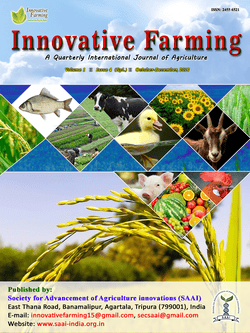
Modern Cowpea Breeding Helps in Adapting Climate Change
Himani B. Patel*
Dept. of Vegetable Science, ASPEE College of Horticulture & Forestry, Navsari Agricultural University, Navsari - 396 450, Gujarat, India
A.I. Patel
Dept. of Vegetable Science, ASPEE College of Horticulture & Forestry, Navsari Agricultural University, Navsari - 396 450, Gujarat, India
S.N. Saravaiya
Dept. of Vegetable Science, ASPEE College of Horticulture & Forestry, Navsari Agricultural University, Navsari - 396 450, Gujarat, India
Prayagbhai Golakiya
Dept. of Vegetable Science, ASPEE College of Horticulture & Forestry, Navsari Agricultural University, Navsari - 396 450, Gujarat, India
DOI: NIL
Keywords: Cowpea, breeding, climate
Abstract
Cowpea is multi-purpose crop because it is used as vegetable, grain, green manure, fodder and pasture crop. It provides strong support to the livelihood of small-scale farmers through its contributions to their nutritional security, income generation and soil fertility enhancement. Climate change poses a fundamental threat to the places, species and people's livelihoods. Crop yields of cowpea will be fall within the next decade due to climate change. Therefore, by using modern breeding methods and development of suitable cultivar will increase adaptation to climate change.
Downloads
not found
